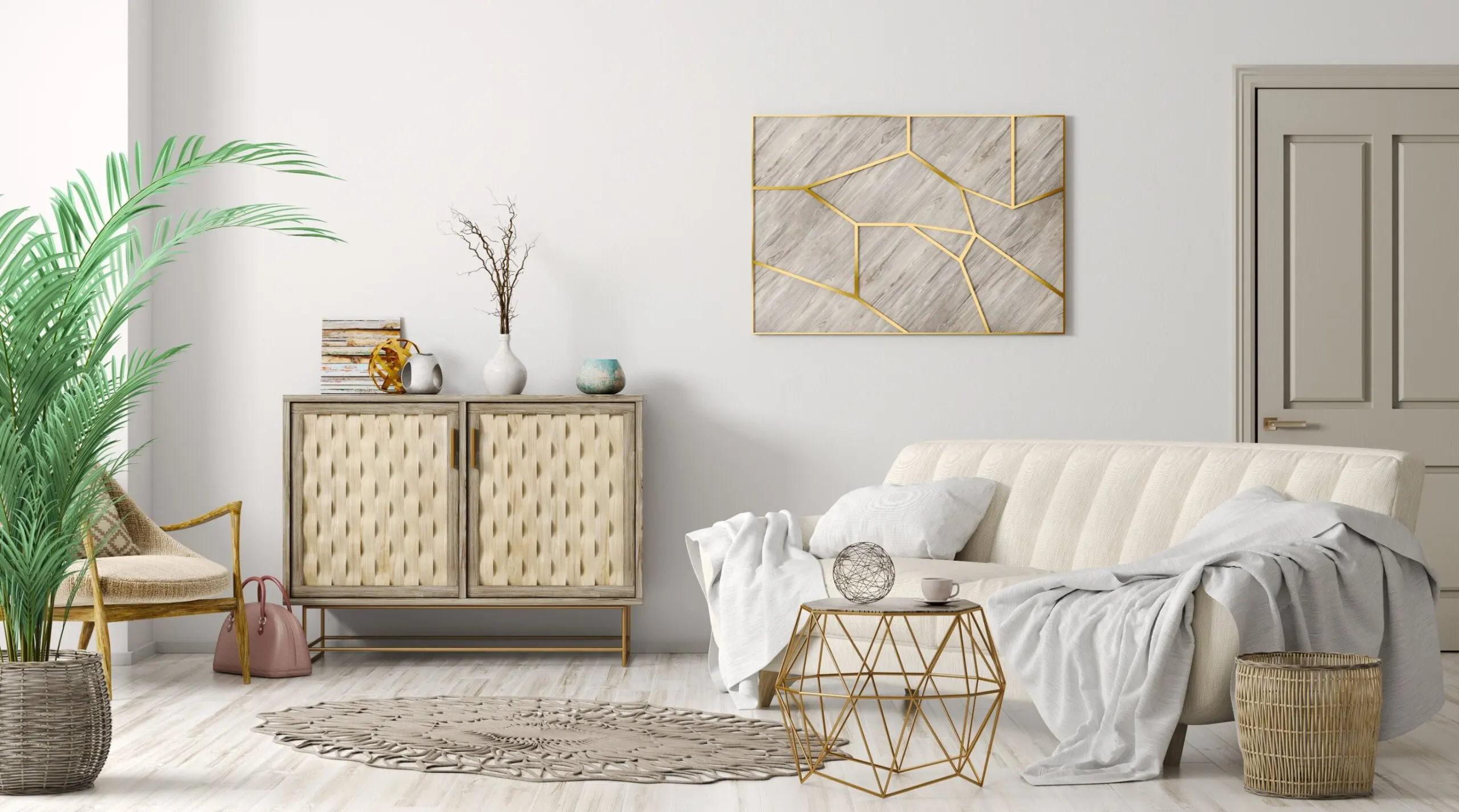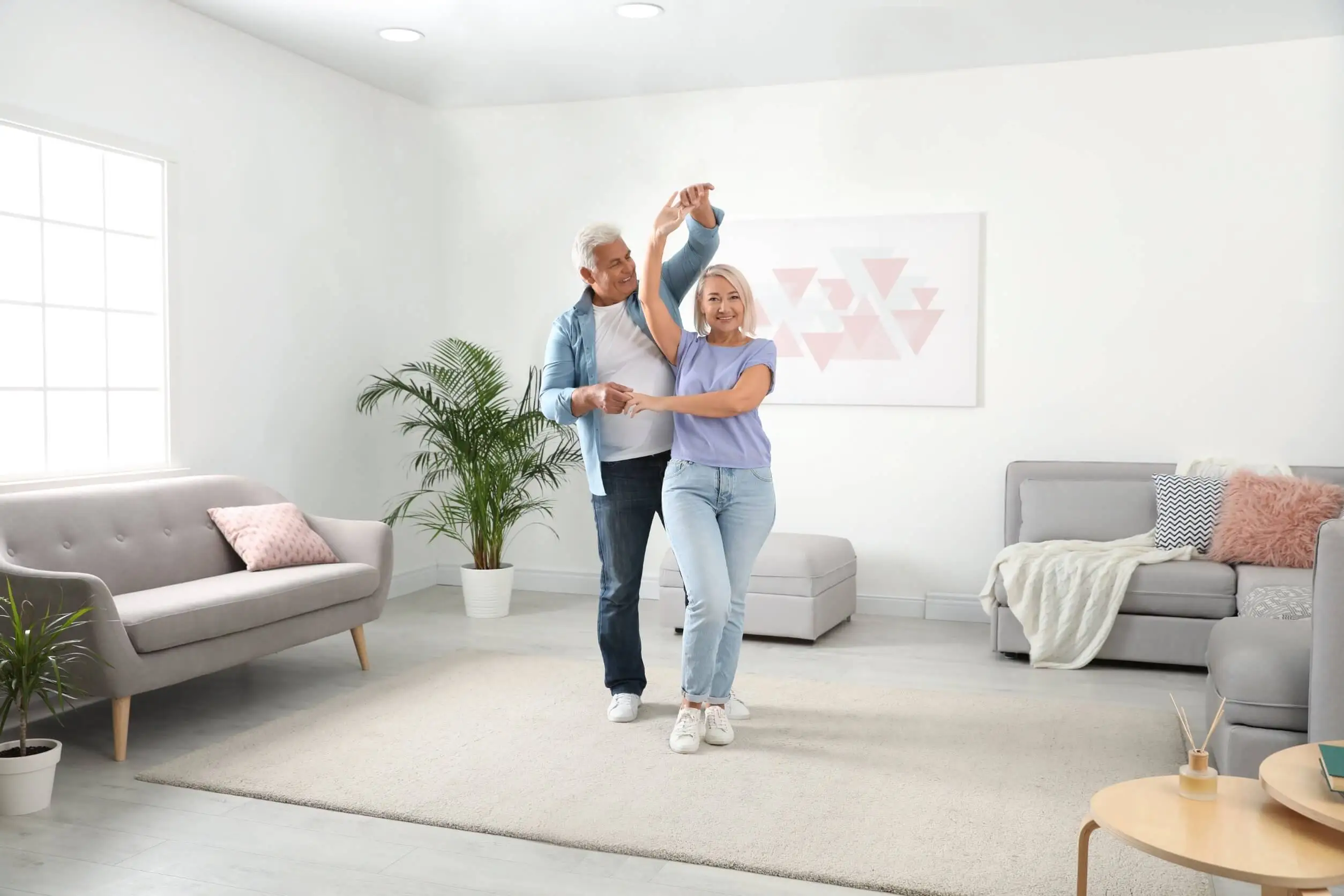What is Emotional Decoration and How Can You Apply It?

There’s nothing like coming home and feeling happy and surrounded by spaces that help us feel positive, vital, and cheerful. In this sense, the configuration of spaces through colors, objects, distribution, lighting, decoration, and other factors plays a key role. In this article, we’ll teach you all about emotional decoration and how to use it in your home.
Although we’re not always aware of it, all furniture, paint, and decoration, in general, convey emotions, whether they be calm, peace, joy, security, or any other similar positive emotion. However, our space can also convey feelings of uneasiness, anxiety, coldness, or negativity. For this reason, putting our intention to creating spaces that promote well-being is a great idea.
Next, we’ll explain why emotional decoration is so important in interior design and why it can play a key role in our favor to feel good. This way, you can give a touch of harmony, tranquility, and happiness to the places you inhabit.
What is emotional decoration?

Emotional decoration is a type of decoration that’s aimed at transmitting and generating positive emotions through the arrangement of spaces. The idea is to achieve maximum comfort and security within the spaces we inhabit in order to have se sense of serenity, joy, and good vibes.
It’s a discipline that seeks that spaces comply with other functionalities that bring benefits to physical and emotional health and are aesthetically pleasing. In fact, it’s based on the relationship between psychology and space.
In this regard, a publication of the University of Sciences and Arts of Latin America UCAL states that “psychology and architecture are two sciences that always go hand in hand, in relation to the subject of interior design…Design is very important to promote, develop, or influence good moods in people.”
We think you may be interested in reading this, too: Eco-Friendly Decoration: Sustainable Ways To Decorate Your Home
In this sense, taking home what’s in style is not necessarily necessary. Many times when we go into a furniture and decor store with the intention of remodeling our home, we get carried away by trends.
However, although it is not wrong to be aware of the latest trends in decoration, we must take into account the preferences and comfort of each household member.
When it comes to emotional decoration, there are no rules. The important thing is to create a friendly and pleasant space where we can feel that we are really at home. Likewise, the place should convey positive emotions so that we can have good experiences while inside it.
How to apply emotional decoration to your home
Although many designers and architects are experts in emotional decoration today, it’s also a very intuitive and personal process. However, there are certain common factors when it comes to creating spaces that generate well-being. You should take them into account when you begin to evaluate your home.
In this regard, the renowned Spanish interior designer Susana Cots said in an interview for the media La Vanguardia that “emotional interior design, when well worked, can become a therapeutic interior design, which makes us feel better and brings us calm and serenity.” The expert points out that every detail is important and that homes should be seen as living beings – that is, they evolve and can be transformed.
Here are some key factors that you should take into account when applying emotional decoration to your personal or workspaces. Are you ready?
Decorate while feeling the emotions that each space transmits
This is the basic principle of emotional decoration. To do this, you need to take the time to sit for a while in each room, space, or corner of your home to make an assessment of what the space conveys. Allow yourself to feel emotions and see what feeling each place conveys to you.
Start by looking at issues such as whether or not it’s tidy. This is a fundamental aspect that can generate serenity or, on the contrary, a sense of chaos. Also, check if it’s dark or bright and if you like the aroma. All these perceptions and emotions we experience speak for themselves and can guide us on whether it’s necessary to make any changes.
If you feel like you’re in a heavy environment, it’s certainly time to make some transformation. Sometimes, removing some obsolete objects is enough to make the environment feel fresher and less heavy.
You can also paint a wall, place a plant, or change a painting. The important thing is that after making such a change, you have a positive feeling that allows you to feel more comfortable in the space.
Choose the right furniture and decorative objects

When choosing each piece of furniture and object that will decorate our homes, we must be sure of what it transmits to us. Thus, to make the right choice, it’s necessary to prioritize furniture that provides comfort, security, and harmony with the rest of the house. In this way, we will guarantee that we are making a good investment.
If for some reason you received an object as a gift or inheritance that you don’t like at all, you shouldn’t keep it just because you feel like you have to. There’s always the option of donating or exchanging it. In contrast, we can choose photographs to decorate that evoke happy and fun moments. Also, we can feature souvenirs or decorative objects that remind us of trips or loved ones.
On the other hand, books contribute to emotional decoration, as they’re sources of wisdom and beauty. In this sense, they are good allies, and we can have them in different spaces. For example, a book of poetry or photography that generates calmness when we open it is a great decoration. The important thing is to place pieces that help us to reinforce positivity.
Keep nature in mind when decorating
Flowers and plants are fantastic for generating positive emotions and creating environments that feel fresh and full of life. They are living beings that transmit relaxing experiences with their magic, beautiful colors, and aromas. However, the recommendation is to use living plants and not artificial ones.
In fact, a study published in the Journal of Physiological Anthropology evaluated the relationship between indoor plants and stress reduction. The findings state that “active interaction with houseplants can reduce physiological and psychological stress compared to mental work. This is achieved by suppressing sympathetic nervous system activity and diastolic blood pressure, and promoting comfortable, calm, and natural feelings.”
Avoid having broken or messy things
Another recommendation is to avoid spoiled and broken items. It’s best to replace them, as well as the objects that don’t generate positive emotions. This tip is fundamental when there are children at home. If they’re afraid of a certain object, for example, perhaps it’s better to take it out of use for their well-being.
On the other hand, if the walls are in bad condition, you should paint them. If the faucet fails, it should be repaired as soon as possible. This is a recommendation to apply to the whole house, because when everything works well, we feel good.
Keep the spaces tidy
Order is one of the most important aspects when we talk about applying emotional decoration. We can have the best furniture and accessories in our home; however, if our space is messy or dirty, it will generate chaos and stress in our lives.
There’s nothing better than keeping our house clean, with a pleasant aroma and a place for everything and everything in its place. It’s important to have storage spaces for seasonal objects such as those used at Christmas.
Learn about the psychology of color and lighting
The lighting in the house and the colors that dress our walls and spaces are very important in the emotions we feel. Before choosing the color that will “dress” your house, you should read about the psychology of color and how each tone evokes different sensations.
For its part, lighting also has an important contribution to our moods. In fact, a well-lit living room brings a sense of peace, tranquility, and joy. When choosing the lighting, it’s important to choose the right type of bulbs, because warm and cold lighting should be used in different environments. In this sense, warm light generates a feeling of welcome and security .
Take care of your senses
Regarding noise, it’s important to live in a quiet space and as far away as possible from highways or city noises. Fortunately, there’s the opportunity to use window glass that isolates uncomfortable noises. In this way, it’s much easier to enjoy peace and quiet in the home.
It’s also necessary to pay attention to the aromas of your home. Concepts such as aromatherapy have shown that smells also influence our moods. Although it may seem like an invisible factor, its presence in the environment is essential to feel at ease. The same is true of textures. For example, it’s not the same to find yourself with a soft blanket that favors sleep as with a heavy and itchy one.
Like this article? You may also like to read: What are the Advantages and Disadvantages of Floating Beds?
Take good care of yourself!
As you’ve just read in this article, there are several factors that contribute to good living in the home. Remember that when applying emotional decoration, the important thing is to feel good at home, however small or large it may be.
On the other hand, it’s essential that you don’t forget to take the opinions of all the people living in the home into account, because everyone may have different needs and preferences. For this reason, reaching agreements and finding a middle ground where everyone feels equally comfortable is important.
Finally, a good option is to hire an expert designer or interior designer to help us with the distribution of space, the choice of colors, furniture, and objects. However, if this isn’t within your budget, needs, or preferences, there are other options.
We recommend looking at decoration showcases, visiting interior design pages, and looking for inspiration in social networks or magazines. It’s essential to take the time to identify which textures, materials, and colors generate the most pleasant emotions for you.
All cited sources were thoroughly reviewed by our team to ensure their quality, reliability, currency, and validity. The bibliography of this article was considered reliable and of academic or scientific accuracy.
- Aguirre Escárcega, F. E. (2016). Estímulos y experiencias cromáticas en el espacio interior. INMATERIAL. Diseño, Arte y Sociedad, 1(2), 67–90. https://core.ac.uk/download/pdf/147365387.pdf
- Lee, MS, Lee, J., Park, BJ y Miyazaki, Y. (2015). La interacción con plantas de interior puede reducir el estrés psicológico y fisiológico al suprimir la actividad del sistema nervioso autónomo en adultos jóvenes: un estudio cruzado aleatorio. Revista de antropología fisiológica , 34 (1), 21. https://doi.org/10.1186/s40101-015-0060-8
- María, C., & Lescano, F. Y. (s/f). Interiorismo y Bienestar emocional. Edu.pe. Recuperado el 13 de junio de 2022, de https://repositorio.ucal.edu.pe/bitstream/handle/20.500.12637/356/Interiorismo%20y%20Bienestar%20emocional.pdf?sequence=1&isAllowed=y
- Palau, B. F. (2020, mayo 31). Interiorismo emocional o cómo la decoración de un espacio puede ser terapéutica. La Vanguardia. https://www.lavanguardia.com/magazine/diseno/20200531/481425011387/susanna-cots-interiorismo-emocional-terapeutico-color-blanco-olor.html
This text is provided for informational purposes only and does not replace consultation with a professional. If in doubt, consult your specialist.








